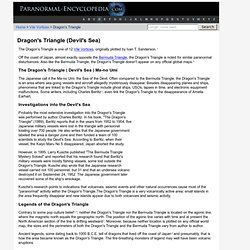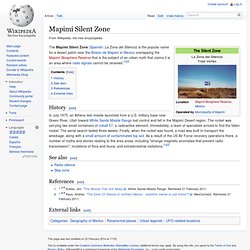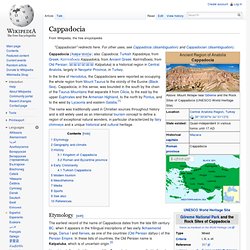

Carnac stones. The Ménec alignments, the most well-known megalithic site among the Carnac stones Stones in the Kerlescan alignments Although the stones date from 4500 BC, modern myths were formed which resulted from 1st century AD Roman and later Christian occupations, such as Saint Cornelius[3] – a Christian myth associated with the stones held that they were pagan soldiers in pursuit of Pope Cornelius when he turned them to stone.[4][5][6] Brittany has its own local versions of the Arthurian cycle.

Local tradition claims that the reason they stand in such perfectly straight lines is that they are a Roman legion turned to stone by Merlin. Zorats Karer : Carahunge. Zorats Karer (Armenian: Զորաց Քարեր, locally Դիք-դիք քարեր Dik-dik karer),[1] also called Karahunj, Qarahunj or Carahunge and Carenish (Armenian: Քարահունջ և Քարենիշ) is a prehistoric archaeological site near the town of Sisian in the Syunik Province of Armenia.

The phrase Zorats Karer is literally translated from Armenian as Army Stones. It is also often referred to in international tourist lore as the 'Armenian Stonehenge. Megaliths of Carnac: Stone Circles / Cromlechs / Enclosures. Bermuda Triangle. The Bermuda Triangle, also known as the Devil's Triangle, is a loosely defined region in the western part of the North Atlantic Ocean, where a number of aircraft and ships are said to have disappeared under mysterious circumstances.

According to the US Navy, the triangle does not exist, and the name is not recognized by the US Board on Geographic Names.[1] Popular culture has attributed various disappearances to the paranormal or activity by extraterrestrial beings.[2] Documented evidence indicates that a significant percentage of the incidents were spurious, inaccurately reported, or embellished by later authors.[5] In a 2013 study, the World Wide Fund for Nature identified the world’s 10 most dangerous waters for shipping, but the Bermuda Triangle was not among them.[6] Triangle area The area is one of the most heavily traveled shipping lanes in the world, with ships crossing through it daily for ports in the Americas, Europe, and the Caribbean Islands.
Origins. Dragon's Triangle (Devil's Sea) The Dragon's Triangle is one of 12 Vile Vortices, originally plotted by Ivan T.

Sanderson. Off the coast of Japan, almost exactly opposite the Bermuda Triangle, the Dragon's Triangle is noted for similar paranormal disturbances. Also like the Bermuda Triangle, the Dragon's Triangle doesn't appear on any official global maps. The Dragon's Triangle | Devil's Sea | Ma-no Umi. Puerta de Hayu Marka, Doorway of the Amaru Meru (Aramu Muru) Gate of the Gods, Lake Titicaca Markawasi Stone Forest. Gate of the Gods found in Peru Stargate and Dimensional Doorway Carved in Solid Rock at Lake Titicaca, Peru.

A huge mysterious door-like structure in the Hayu Marca mountain region of Southern Peru near Lake Titicaca,an hour drive from the city of Puno, has long been revered by local indians as the "City of the Gods. " Although no actual city has ever been discovered and recently homes have begun to be built near the site, about a mile inland from Lake Titicaca. Mapimí Silent Zone. The Mapimí Silent Zone (Spanish: La Zona del Silencio) is the popular name for a desert patch near the Bolsón de Mapimí in Mexico overlapping the Mapimí Biosphere Reserve that is the subject of an urban myth that claims it is an area where radio signals cannot be received.[1][2] History[edit] In July 1970, an Athena test missile launched from a U.S. military base near Green River, Utah toward White Sands Missile Range lost control and fell in the Mapimí Desert region.

The rocket was carrying two small containers of cobalt 57, a radioactive element. Zone of Silence in Mexico is an Unexplained Mystery. By Logan Hawkes There is much about our world that we still do not understand.

Scientists tell us that natural mysteries abound in every corner of the Earth, from the lifeless desert of Chile to the bottomless depths of the Pacific, there are things we simply do not comprehend. Perhaps this is the best way to describe a place in northern Mexico in the middle of the hot, searing, punishing Chihuahuan desert, a place commonly called the "Zone of Silence" by the few locals, scientists, students and visitors that wander there from time to time in search of answers. It is a strange place to experience, one of those mysterious natural wonders that beg our attention and muddle our senses. It is sometimes difficult to tell what is truth and what is not; to recognize what you see as real or not. Drive 400 hundred miles west of El Paso and you enter into an unforgiving section of foreboding semiarid desert landscape that begs for mercy but offers none.
Zone of Silence. Cappadocia. Cappadocia (/kæpəˈdoʊʃə/; also Capadocia; Turkish Kapadokya, from Greek: Καππαδοκία Kappadokía, from Ancient Greek: Καππαδοκία, from Old Persian: 𐎣𐎫𐎱𐎬𐎢𐎣 Katpatuka) is a historical region in Central Anatolia, largely in Nevşehir Province, in Turkey.

In the time of Herodotus, the Cappadocians were reported as occupying the whole region from Mount Taurus to the vicinity of the Euxine (Black Sea). Cappadocia, in this sense, was bounded in the south by the chain of the Taurus Mountains that separate it from Cilicia, to the east by the upper Euphrates and the Armenian Highland, to the north by Pontus, and to the west by Lycaonia and eastern Galatia.[1] The name was traditionally used in Christian sources throughout history and is still widely used as an international tourism concept to define a region of exceptional natural wonders, in particular characterized by fairy chimneys and a unique historical and cultural heritage. Etymology[edit] Geography and climate[edit] Mt.
History[edit] Derinkuyu.jpg (JPEG Image, 450x300 pixels) Category:Sunken cities. Drowned cities: Myths and secrets of the deep. Cookies on the New Scientist website close Our website uses cookies, which are small text files that are widely used in order to make websites work more effectively.

To continue using our website and consent to the use of cookies, click away from this box or click 'Close' Find out about our cookies and how to change them Log in. The Ruins of the Gulf of Khambhat and Dwarka. The Ruins of Gulf of Khambhat and Dwarka The Gulf of Khambhat (formerly known as the Gulf of Cambay) is an inlet of the Arabian Sea along the west coast of India, in the state of Gujarat.

It is about 80 miles in length, and divides the Kathiawar peninsula to the west from the eastern part of Gujarat state on the east. The Narmada and Tapti rivers empty into the Gulf. Marine archeology in the Gulf of Cambay - now known as the Gulf of Khambhat - centers around controversial findings made in December 2000 by the National Institute of Ocean Technology (NIOT). The structures and artifacts discovered by NIOT are the subject of contention. One major complaint is that artifacts at the site were recovered by dredging, instead of being recovered during a controlled archeological excavation. A follow-up investigation was conducted by NIOT in November 2001, which included dredging to recover artifacts and sonar scans to detect structures. The Sunken City of Dwarka. Kumari Kandam. References[edit] References from literary sources[edit] Black Sea deluge theory.
The Black Sea deluge is a hypothesized catastrophic rise in the level of the Black Sea circa 5600 BC due to waters from the Mediterranean Sea breaching a sill in the Bosporus Strait. The hypothesis made headlines when The New York Times published it in December 1996, shortly before it was published in an academic journal.[1] While it is agreed that the sequence of events described did occur, there is debate over the suddenness, dating and magnitude of the events. Two opposing hypotheses have arisen to explain the rise of the Black Sea: gradual, and oscillating.[2]:15 The oscillating hypothesis specifies that over the last 30,000 years, water has intermittently flowed back and forth between the Black Sea and the Aegean Sea in relatively small magnitudes, and does not necessarily presuppose that there occurred any sudden "refilling" events.
Flood hypothesis[edit] Black Sea today (light blue) and in 5600 BC (dark blue) according to Ryan and Pitman's hypothesis. Yonaguni Monument. Sunken formations Yonaguni formation. Lake Titicaca Underwater Ruins. 52 09 N 13 13 W. Brazil (mythical island) Brasil, also known as Hy-Brasil or several other variants,[1] is a phantom island which was said to lie in the Atlantic Ocean west of Ireland. In Irish myths it was said to be cloaked in mist, except for one day every seven years, when it became visible but still could not be reached.
Vitrification. One of the strangest mysteries of ancient Egypt is that of the great glass sheets that were only discovered in 1932. In December of that year, Patrick Clayton, a surveyor for the Egyptian Geological Survey, was driving among the dunes of the Great Sand Sea near the Saad Plateau in the virtually uninhabited area just north of the south-western corner of Egypt, when he heard his tyres crunch on something that wasn't sand. It turned out to be large pieces of marvelously clear, yellow-green glass. In fact, this wasn't just any ordinary glass, but ultra-pure glass that was an astonishing 98 per cent silica. Clayton wasn't the first person to come across this field of glass, as various 'prehistoric' hunters and nomads had obviously also found the now-famous Libyan Desert Glass (LDG). The glass had been used in the past to make knives and sharp-edged tools as well as other objects.
Sacred Caves. Throughout history, primitive peoples have made use of caves for shelter, burial, or as religious sites. Since items placed in caves are protected from the climate and scavenging animals, which means caves are an archaeological treasure house for learning about indigenous people. Cave paintings are of particular interest. Majlis al Jinn. Portal to Maya Underworld Found in Mexico? August 22, 2008 A labyrinth filled with stone temples and pyramids in 14 caves—some underwater—have been uncovered on Mexico's Yucatán Peninsula, archaeologists announced last week.
Mount Hermon. Mount Hermon (Arabic: جبل حرمون , جبل الشيخ / ALA-LC: Jabal al-Shaykh / "Mountain of the Chief" "Jabal Haramun"; Hebrew: הר חרמון, Har Hermon, "Mount Hermon") is a mountain cluster in the Anti-Lebanon mountain range. Göbekli Tepe. Ancient Observatories: Chaco Canyon. Stonehenge. Archaeologists believe it was built anywhere from 3000 BC to 2000 BC.
Radiocarbon dating in 2008 suggested that the first stones were raised between 2400 and 2200 BC,[2] whilst another theory suggests that bluestones may have been raised at the site as early as 3000 BC.[3][4][5] Archaeoastronomical sites 3. Henge. There are three related types of Neolithic earthwork which are all sometimes loosely called henges. Dolmen. A dolmen, also known as a portal tomb, portal grave or quoit, is a type of single-chamber megalithic tomb, usually consisting of three or more upright stones supporting a large flat horizontal capstone (table), although there are also more complex variants.
Most date from the early Neolithic period (4000 to 3000 BC). Dolmens were typically covered with earth or smaller stones to form a barrow. Coral Castle. History[edit] According to the Coral Castle's own promotional material, Edward Leedskalnin was jilted by his 16-year-old fiancée Agnes Scuffs in Latvia, just one day before the wedding. Leaving for America, he came down with allegedly terminal tuberculosis, but spontaneously healed, stating that magnets had some effect on his disease. Edward spent over 28 years building the Coral Castle, refusing to allow anyone to view him while he worked.
Nazca Lines. Coordinates: Band of Holes near Pisco Valley, Peru. Sacsayhuamán. Machu Picchu. Pumapunku. Oak Island Mystery. Oak Island. Great Pyramid of Giza. Monte Albán. Nabta Playa. Great Pyramid of Cholula. Great Sphinx of Giza. Akhenaten. Gods of Egypt - Timeline Egyptian Civilization. Mystery of Markawasi. Mohenjo-daro. Atomic Bomb Destroyed City 4,000 Years Ago. Mohenjo-Daro. Ancient Atomic Wars - Best Evidence?